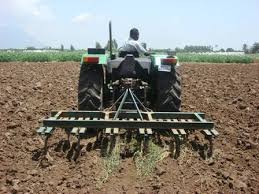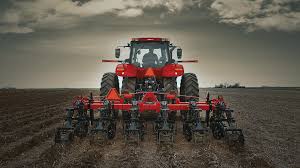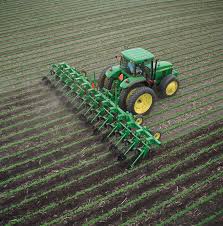Tillage refers to the preparation of soil to create optimal conditions for plant growth. It involves the preparation of the growth zone in the soil (about 10 to 90 cm of the topsoil layer) for plant development. This is achieved by providing a good seedbed, which involves breaking, stirring, turning, or conditioning the soil surface to a certain depth.
Tillage is classified as either primary or secondary. As large areas of the Earth’s surface are subject to tillage, machines have been developed to ease the cumbersome and time-critical work, allowing this task to be performed efficiently in most parts of the world.
Read Also: The Techniques Used for Enhancing Farm Yield
General Importance of Tillage Operations in Farming

The task of tillage is to prepare soils for productive use. Typically, tillage is limited to the arable layer of soil, which contains organic matter and is where plant life thrives. Tillage is necessary to clear virgin soils of plants and animals for agricultural use. It also helps to ensure seedlings have a good environment for growth.
Another objective of tillage is to control weeds and animals living in the soil, such as mice or slugs. While more time and energy-intensive compared to chemical methods, it provides an effective means of pest control. Surface leveling is also important because mechanized agricultural operations rely on a level surface.
Irregularities in the soil surface may be caused by traffic, harvesting, or climatic effects. Moreover, the need to distribute clods and porosity in line with plant requirements is crucial for successful tillage.
A stratified seedbed, for instance, ensures seeds are covered by small clods for protection, while fine soil surrounds them, and larger clods help give structure to the soil. Producing this clod distribution is a major goal of primary tillage, while secondary tillage aims to create fine soils for seedling growth.
Primary Tillage: The Initial Soil Operation
Primary tillage is the main tillage operation conducted at the start of the growing season. It involves reducing soil strength, covering plant materials, and rearranging soil aggregates. This first major operation is crucial for preparing the soil for subsequent cultivation.
Secondary Tillage: Refining the Seedbed
Secondary tillage focuses on preparing the seedbed after the primary tillage has been completed. Implements used for primary tillage are typically not used for secondary tillage. The general objectives of secondary tillage include:
1. Improving the seedbed by further pulverizing the soil.
2. Conserving moisture by killing weeds and reducing evaporation.
3. Cutting crop residues and mixing vegetable matter with the topsoil.
Breaking clods and firming the topsoil to improve tilth for seeding and germination.
Controlling weeds on fallow lands.
Read Also: 16 Medicinal Health Benefits Of Pomaderris kumeraho (Kumerahou)
Tillage Systems: Various Approaches in Agriculture

Several terms define the different tillage systems used in agriculture, each with unique objectives and methods:
1. Conventional Tillage: Traditional tillage practices performed to prepare a seedbed for a given crop in a specific geographical area.
2. Minimum Tillage: The least amount of soil manipulation necessary for crop production or for meeting tillage requirements under given conditions.
3. Mulch Tillage: Tillage of the total soil surface in a way that plant residue is left on or near the surface.
4. No-Till: Direct seeding into previously undisturbed soil.
5. Optimum Tillage: A system that aims to maximize net returns for a given crop under specific conditions.
6. Conservation Tillage: Any system that maintains a minimum of 30% residue cover on the soil surface after planting or retains at least 1,100 kg/ha of flat small grain residue during critical erosion periods.
7. Reduced Tillage: A system that uses fewer or less energy-intensive operations compared to conventional tillage.
8. Strip Tillage: Tilling only 30% or less of the soil surface, usually in bands in the row.
9. Ridge Tillage: A system where the ridges on which crops are planted are formed during cultivation or after harvest, with seeding done on the ridge top.
10. Reservoir Tillage: A system in which small depressions or reservoirs are formed to hold rainwater or sprinkler-applied water.
This article explains what tillage is and introduces its different types. It also highlights the general importance of tillage operations and outlines various tillage systems commonly used in agriculture.
Do you have any questions, suggestions, or contributions? If so, please feel free to use the comment box below to share your thoughts. We also encourage you to kindly share this information with others who might benefit from it. Since we can’t reach everyone at once, we truly appreciate your help in spreading the word. Thank you so much for your support and for sharing!

